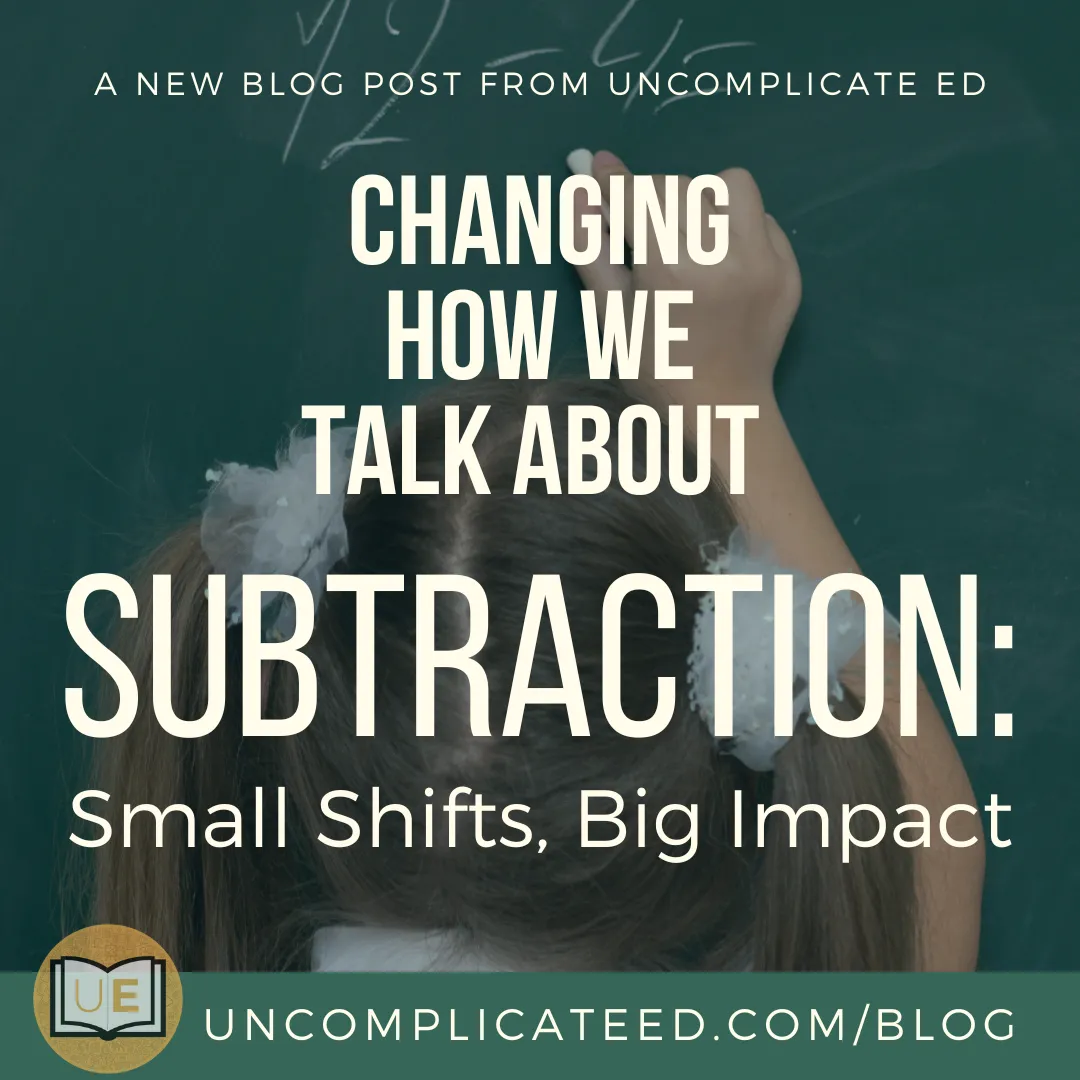
Changing How We Talk About Subtraction: Small Shifts, Big Impact
Changing How We Talk About Subtraction: Small Shifts, Big Impact
When we teach subtraction, we're not just teaching kids how to "take things away." We're helping them understand how numbers relate to each other in different situations. That's why the words we use, and how we read the minus sign, matter.
How should we read the minus sign?
As Van de Walle, Loving, Karp, and Bay-Williams explain in Teaching Student-Centered Mathematics: Developmentally Appropriate Instruction for Grades PreK-2 (2018):
The minus sign should be read as “minus” or “subtract,” not as “take away,” because not all subtraction situations are take away situations.

The three subtraction situations students need to experience
Subtraction isn’t just about making things disappear. It shows up in three key ways, and kids need to experience all of them to build flexible understanding:
1. Separate (Take From)

This is the removal scenario most of us think of first:
“You have 7 marbles. You give 3 to a friend. How many are left?”
This is where take from fits naturally.
2. Part-Part-Whole (Take Apart)

This is when we break a whole into parts:
“You have 7 blocks. You build two towers. How many are in each tower?”
This supports number bonds, fact families, and thinking addition when solving subtraction.
3. Compare (Find the Difference)

This is when we figure out how much more or less:
“You have 7 apples. I have 3. How many more do you have?”
This connects to bar models, number lines, and strategies like thinking addition.
Why this matters
When we only teach subtraction as “take away,” students miss out on deeper understanding. They may:
Struggle with comparison problems
Not see the connection between addition and subtraction (missing addend problems)
Rely too much on removal and not enough on relationships between numbers
When we use minus, subtract, take from, take apart, and find the difference, we help students:
See subtraction as flexible and meaningful
Connect to part-part-whole charts, number bonds, fact families, number lines, and comparison models
Build habits of thinking addition to solve subtraction in missing part or compare situations
A simple cheat sheet for teachers
Say:
“Eight minus three”
“Eight subtract three”
When giving problems, try:
Separate (take from) → “You had 8. You gave away 3. How many are left?”
Part-part-whole (take apart) → “You had 8. You split them into 3 and what?”
Compare → “You have 8. Your friend has 3. How many more do you have?”
Final Thoughts
If you’ve described subtraction as “take away” before you’re in good company; I did too. It’s what many of us learned, and it’s what we naturally passed on to our students. But as Maya Angelou so wisely said, “Do the best you can until you know better. Then when you know better, do better.”
What’s exciting is that we can do better. We can give students language that reflects the full story of subtraction, not just part of it. And when we shift our words, we help kids build number sense, flexibility, and confidence that sticks.
So if this is new thinking for you, that’s something to celebrate. Changing practice when we’re presented with better ways isn’t just okay—it’s what great teaching is all about.
References
Van de Walle, J. A., Loving, C. C., Karp, K. S., & Bay-Williams, J. M. (2018). Teaching student-centered mathematics: Developmentally appropriate instruction for grades PreK–2 (3rd ed.). Boston: Pearson.
Van de Walle, J. A., Karp, K. S., & Bay-Williams, J. M. (2022). Elementary and middle school mathematics: Teaching developmentally (11th ed.). Boston: Pearson.
National Council of Teachers of Mathematics (NCTM). (2000). Principles and standards for school mathematics. Reston, VA: Author.
Common Core State Standards Initiative. (2011). Progressions for the Common Core State Standards in mathematics: K, counting and cardinality; K–5, operations and algebraic thinking. Retrieved from https://achievethecore.org/category/774/mathematics

